What makes a perfect scenic route? The one that is intentionally designed to make visitors slow down and observe. These bespoke walkways running through landscapes with unique natural qualities create the experience of walking on air or on water, igniting new reflections on nature itself, while natural wonders along the routes are amplified by art, design, and architecture, offering thought-provoking art in spectacular scenery.
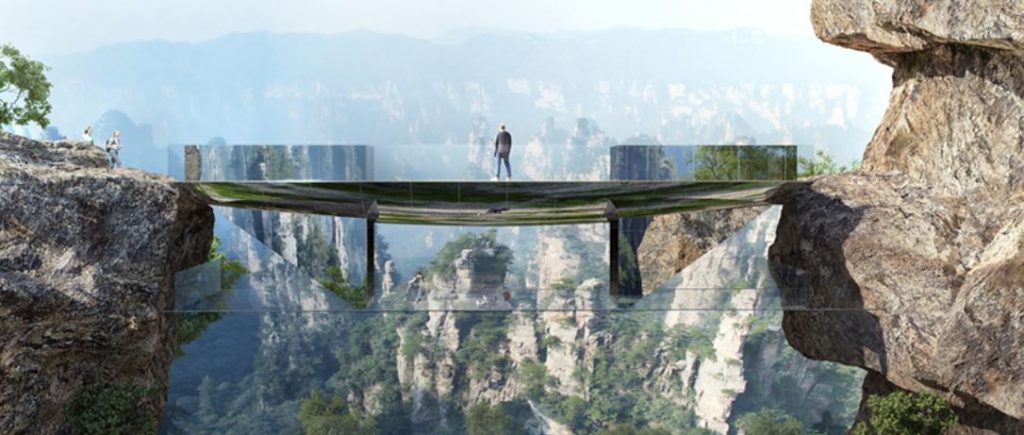
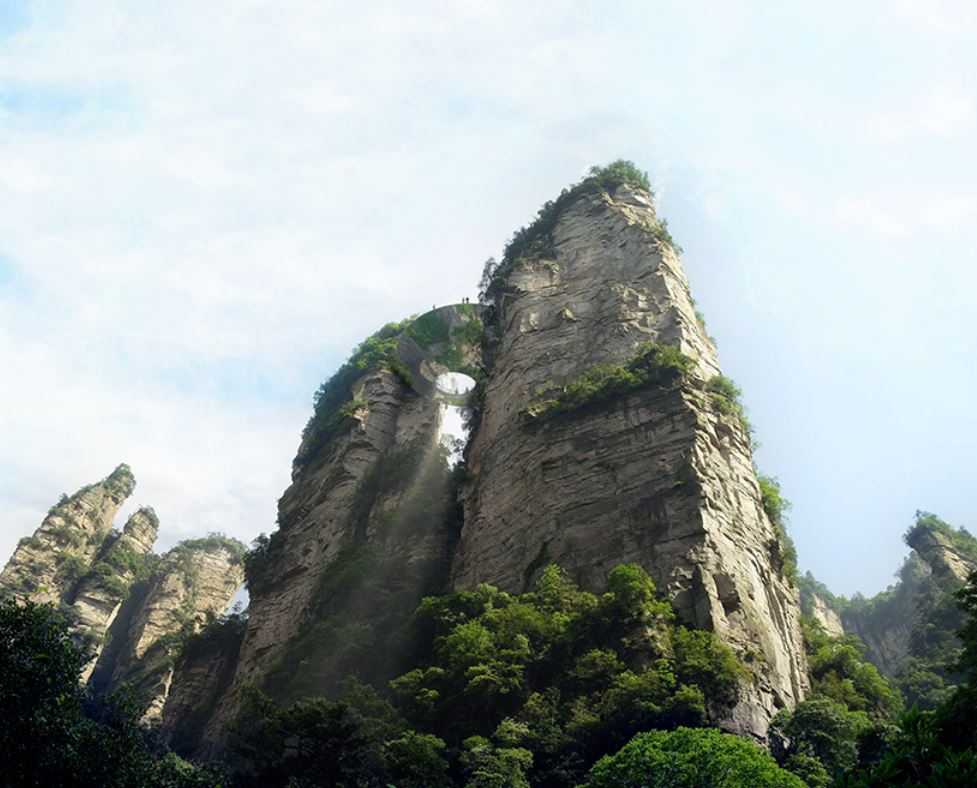
Wulingyuan walking trail by Martin Duplantier (also header image)
Back in 2016, Paris-based practice Martin Duplantier Architectes was awarded first place in a competition organized by the Chinese government to design a series of tourist attractions within the Wulingyuan Scenic Area, Zhangjiajie, the original inspiration for James Cameron’s world of Pandora, in the movie Avatar, and a prized Unesco World Heritage site. The award-winning proposal comprises a series of stunning bridges and pathways connecting two sandstone formations.
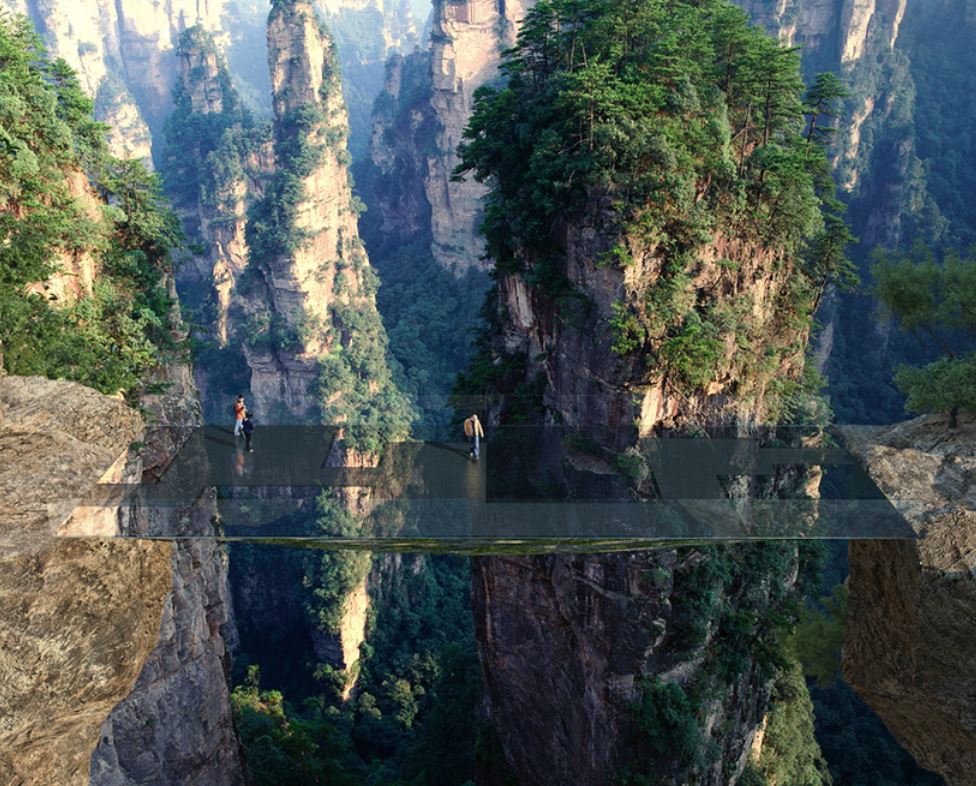
Wulingyuan walking trail by Martin Duplantier
Conceived as a sequence of stealthy geometric shapes, which appear delicately placed within the topography, each intervention uses mirrored stainless steel for its structure, and black stone, that becomes reflective when wet, for the flooring – to create an ‘invisible’ effect.
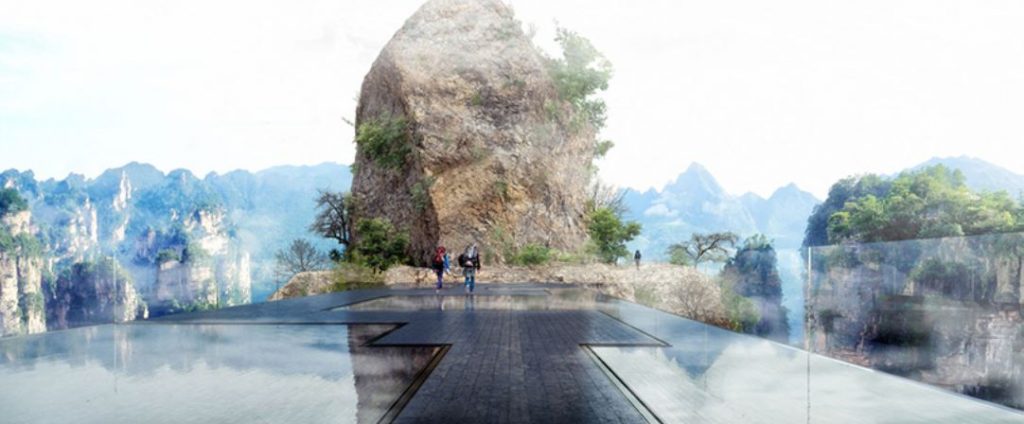
Wulingyuan walking trail by Martin Duplantier
The first intervention designed as a part of the route is an elliptical disk that mirrors its surroundings. An off-center aperture offers fascinating views of the drop below and even allows brave visitors to lay down on a strong net tethered above the void. Another observation bridge has two levels: an upper level that functions primary for circulation, while its lower counterpart allows weary walkers to take a seat in mid-air.
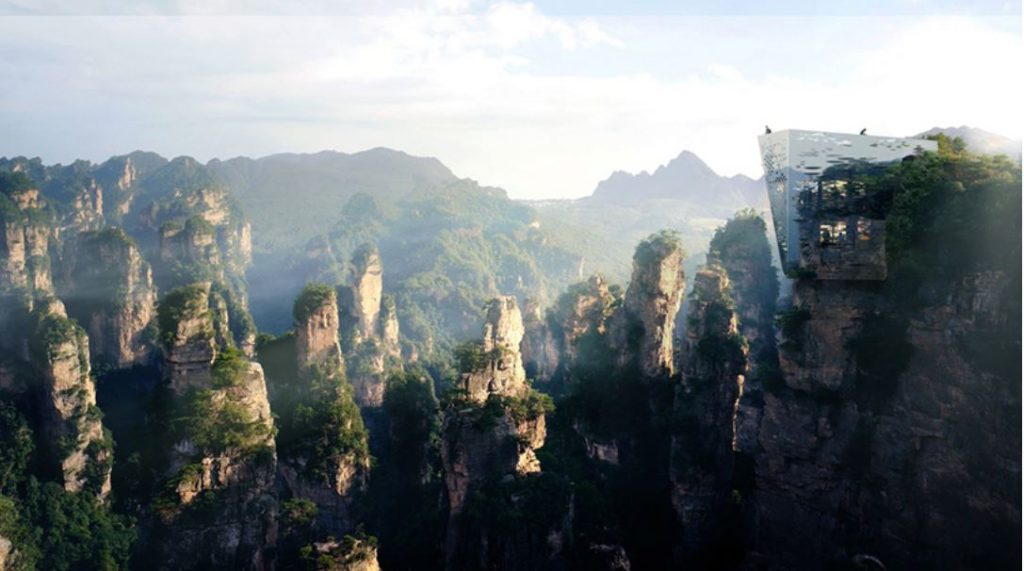
Wulingyuan walking trail by Martin Duplantier
The next spanning structure, titled the Water Mirror and comprising an irregular set of stones topped with two centimeters of water, features nozzles that will spray water every seven minutes, creating a low-lying cloud in the valley. Nearby, there will be glass pavilions offering 360 degree views of overlooking the picturesque landscape, as well as VIP overnight accommodations and a cafe.
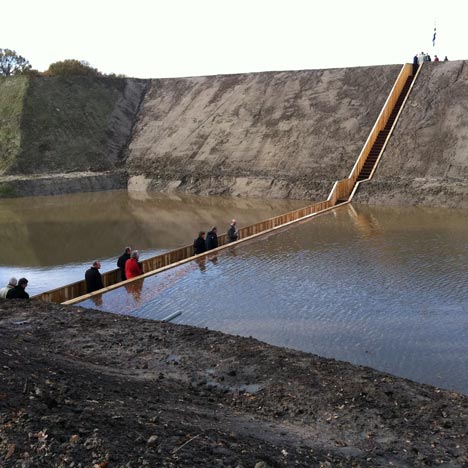
Moses Bridge by RO&AD
Moses, or Sunken Bridge, designed by architects RO&AD of the Netherlands and Belgium is also not visible from a distance and has little impact on surrounding views towards the fort. The extraordinary structure is built across the moat of a historic Dutch fort dating back to 1627, which is a part of the West Brabant Water Line is a 17th century Dutch defensive line of earthen forts and walls that linked and protected a number of cities and villages during attacks from France and Spain.
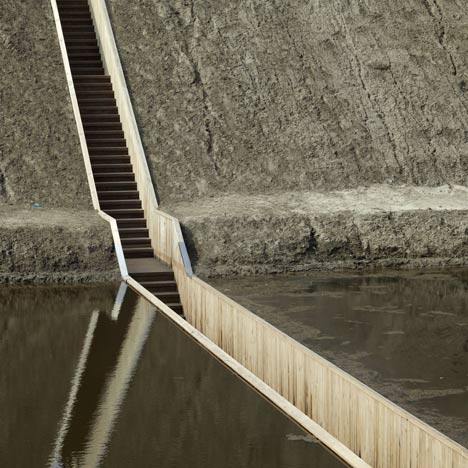
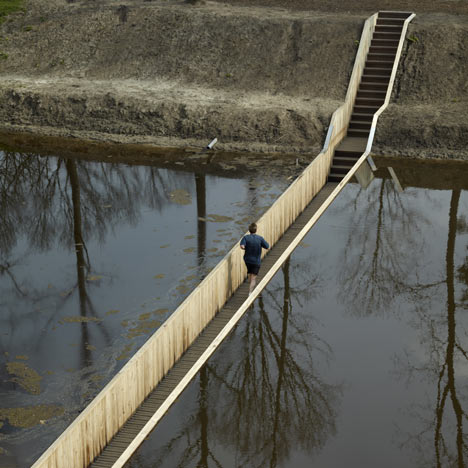
Moses Bridge by RO&AD
The trench-like bridge lies in the canal following the line of the fort slope and sitting almost flush with the soil and the water level. Visitors enter the fortress as Moses walks through the water. In winter, the walkway is flooded to prevent skaters from falling into the bridge.
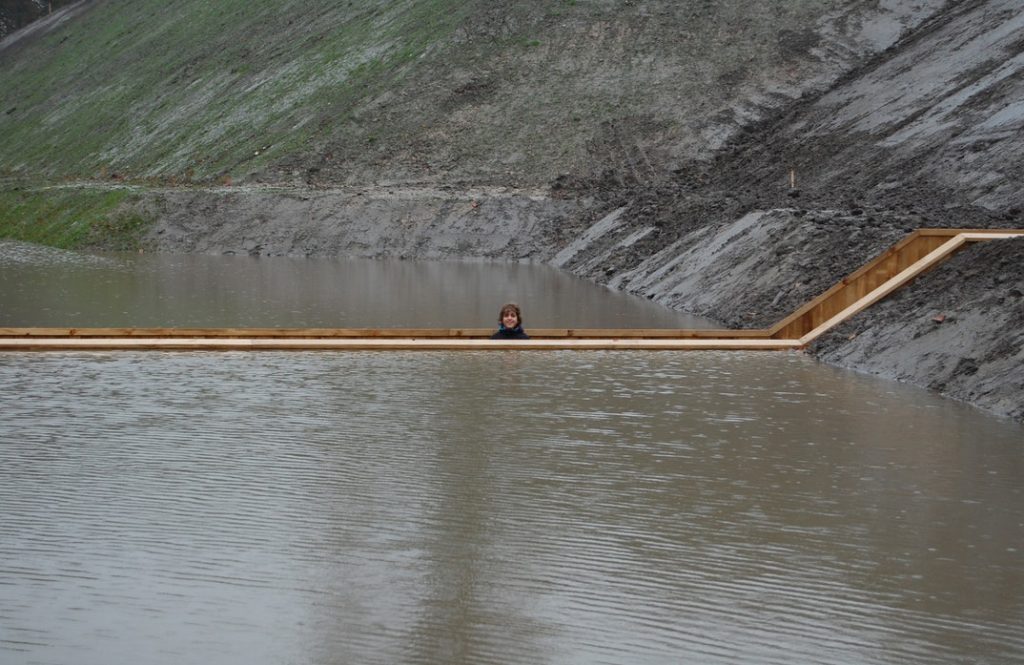
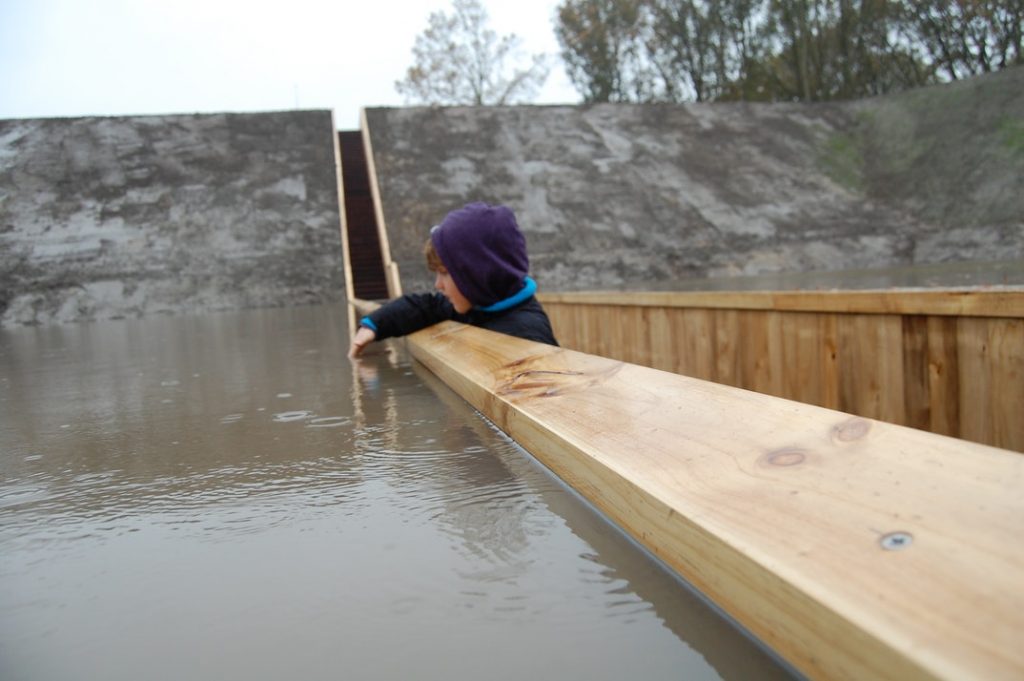
Moses Bridge by RO&AD
The Moses Bridge is not only visually striking and highly functional, but also durable and eco friendly. The walls of the bridge separating the walkway from the surrounding still waters are made of preserved wood that will resist decay.
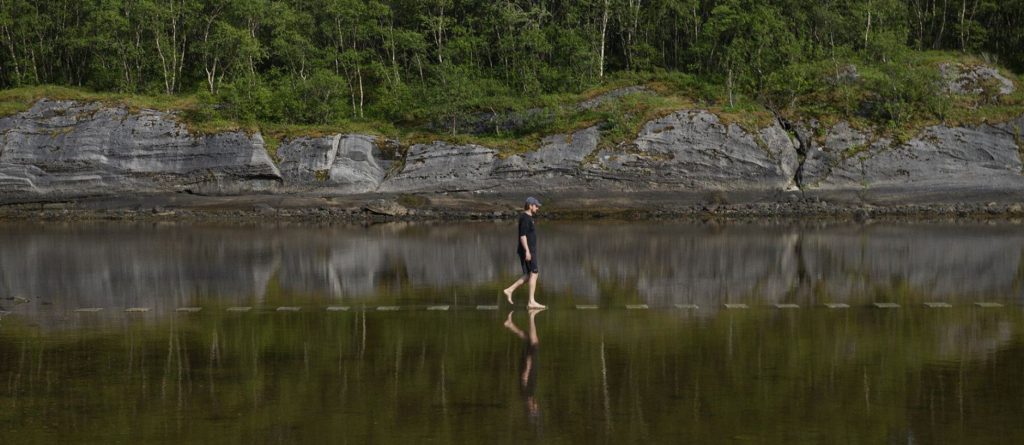
Traelvikosen Scenic Route by snøhetta
Snøhetta, an international integrated architecture and design firm with a global presence, has completed a unique resting space and tidal installation in their native Norway. Their Traelvikosen Scenic Route is one of eleven new architectural projects opened as part of the new Scenic Route project series.
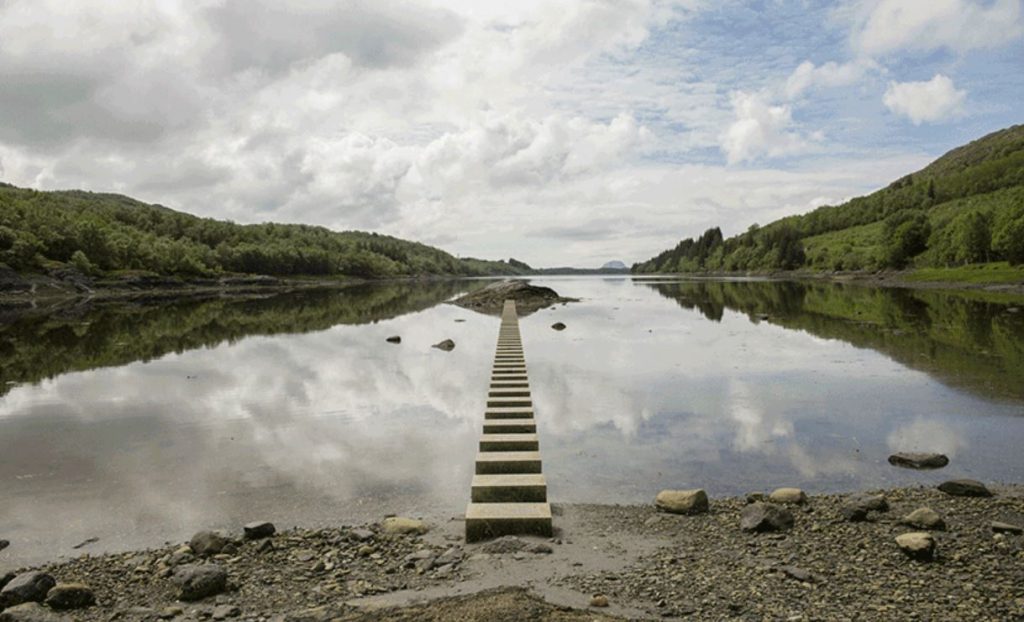
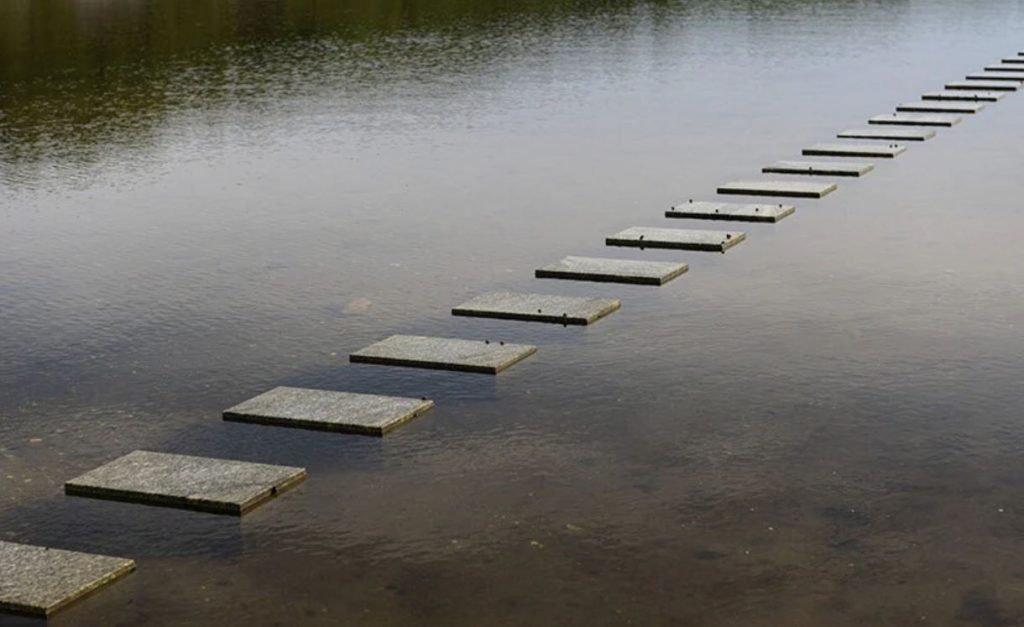
Traelvikosen Scenic Route by snøhetta
The landscape installation is inspired by the rise and fall of sea levels caused by the combined effects of the gravitational forces exerted by the moon, the sun, and the rotation of the Earth. It is composed of 55 stepping stones placed in the water in a horizontal line that take visitors across the sandy sea bottom from the beach towards a small islet. The experience depends on the tidal levels, as the steps are fully visible at low tide and completely gone at high tide.
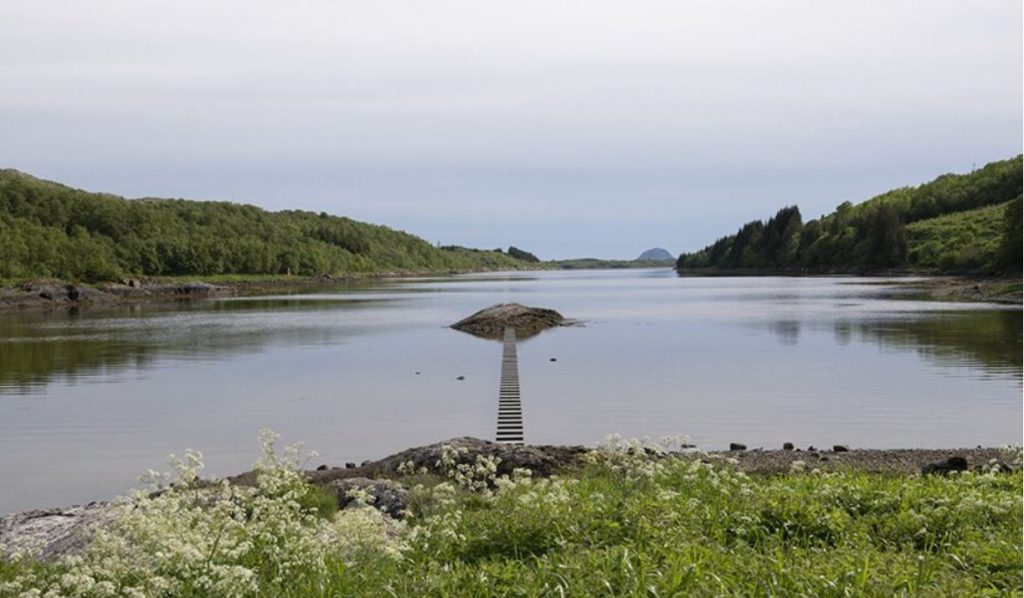
Traelvikosen Scenic Route by snøhetta
In order to minimize the environmental footprint, the team has used construction mats throughout the building phase to allow machines to go in and out as gently as possible. The stones were all locally sourced and transported by boat to the site.